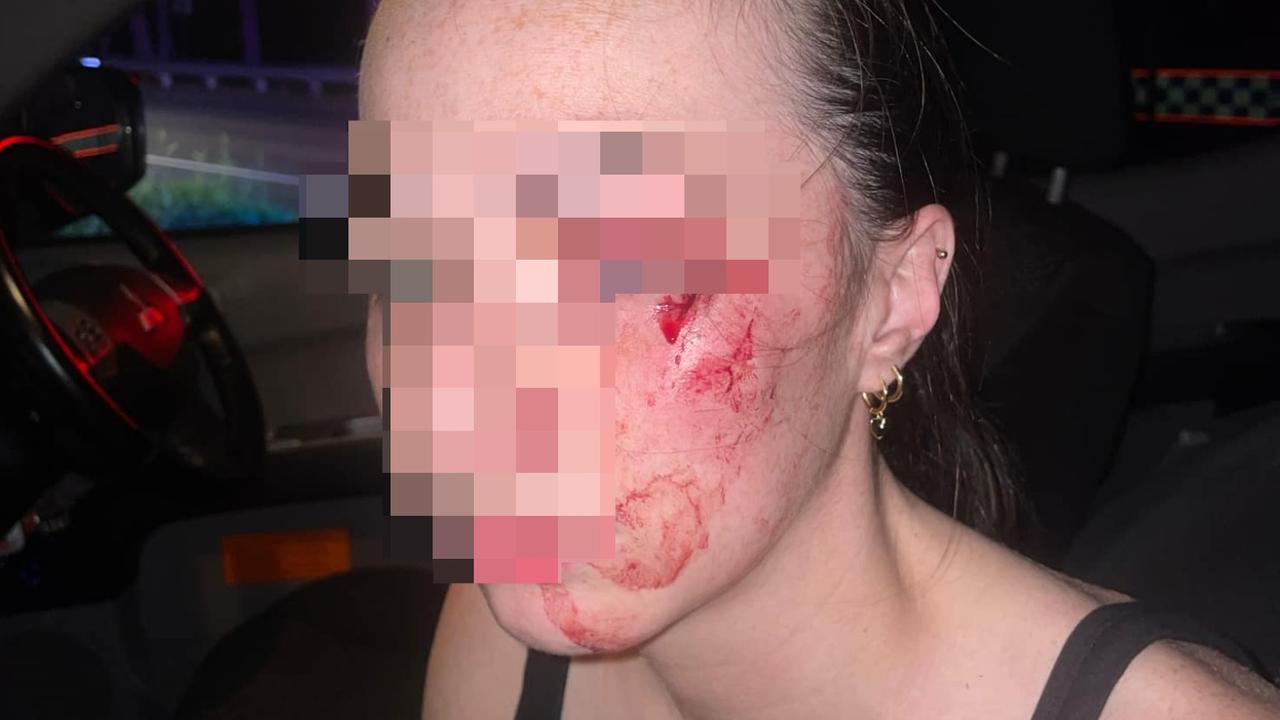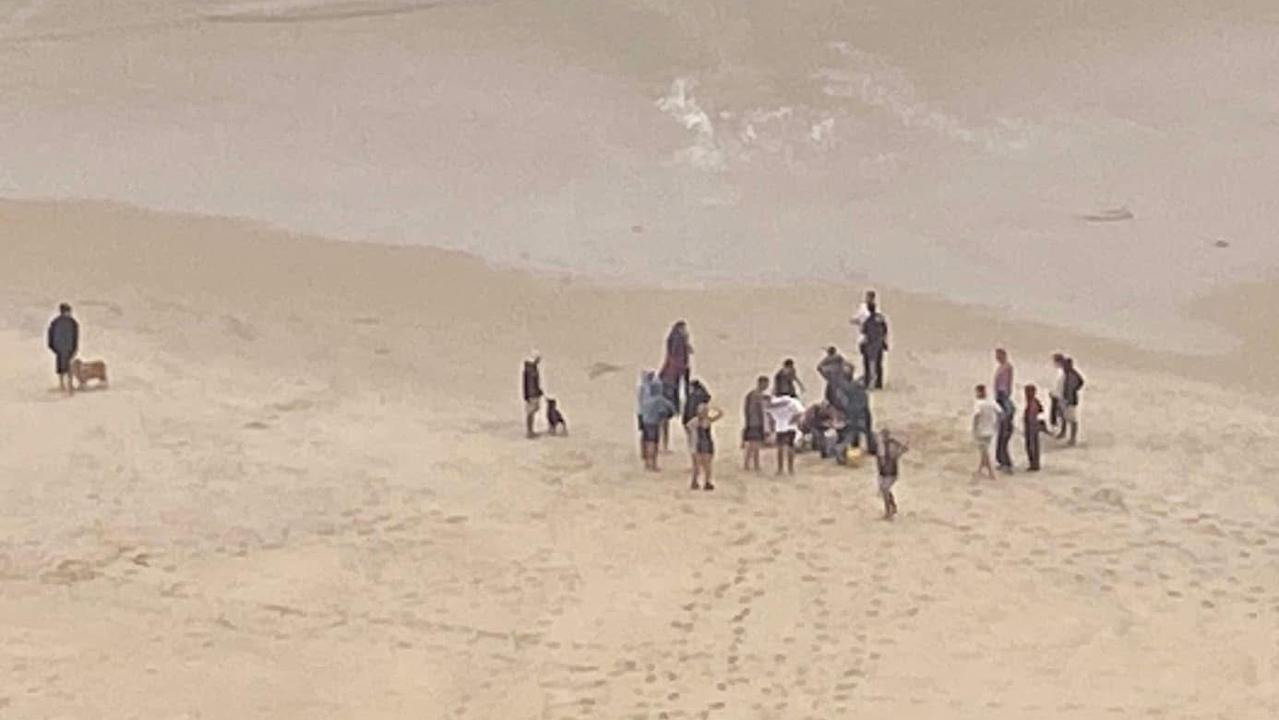Australian Transport Safety Bureau to release preliminary report into Sea World helicopter disaster
Two Sea World chopper pilots may have been flying blind due to a number of critical failures in the moments before their fatal mid-air collision, an interim report has found. SEE THE KEY FINDINGS
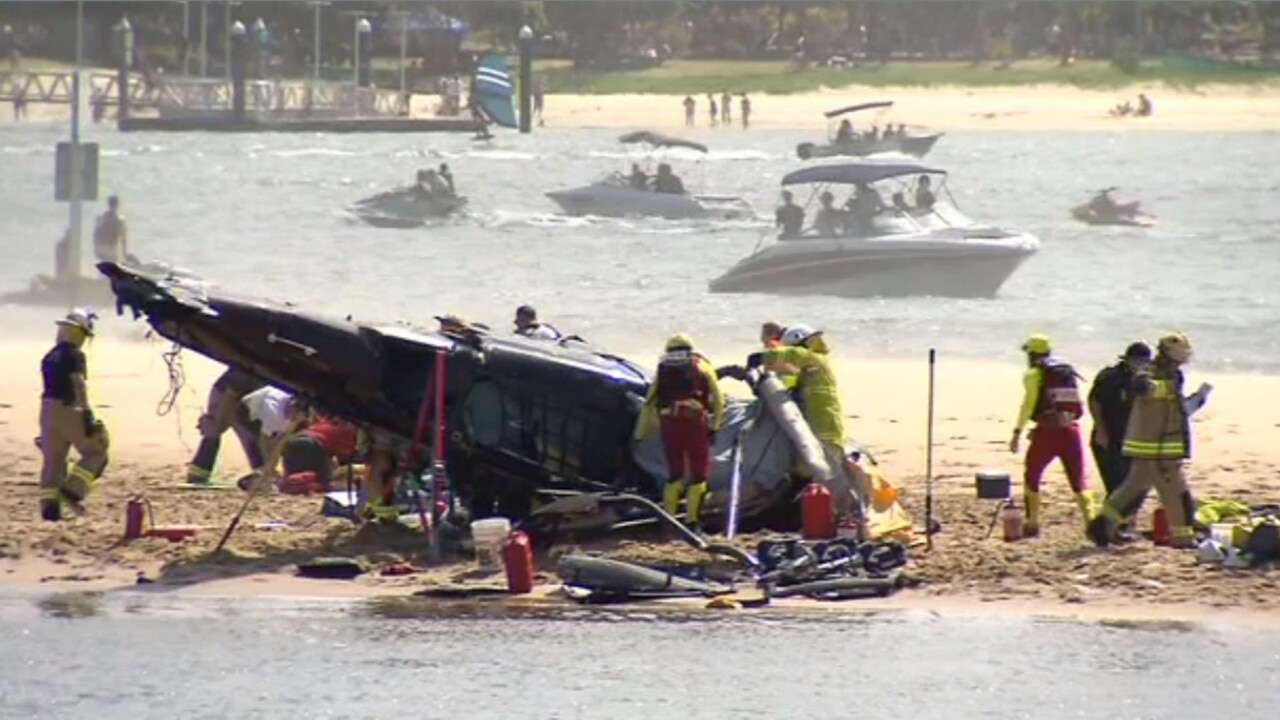
QLD News
Don't miss out on the headlines from QLD News. Followed categories will be added to My News.
An interim report into the Sea World chopper disaster, has exposed a number of critical issues that may have led to the fatal January 2 crash.
The crash on the Southport Broadwater claimed the lives of Sea World Helicopters chief pilot Ash Jenkinson, British newlyweds Ron and Diane Hughes and Sydney mum Vanessa Tadros.
The pilot of the helicopter that miraculously landed on a sandbank with no fatalities, Michael James, told investigators he did not hear a taxi call over radio from fellow pilot Ash Jenkinson as that aircraft took off, the report revealed.
The report, however, said the early finding did not necessarily mean a taxi call was not made “and this topic will be subject to detailed analysis by the ATSB investigation”.
The findings come as part of Australian Transport Safety Bureau chief commissioner Angus Mitchell’s preliminary report into the disaster.

Asked if evidence suggested the crash was more likely to have been caused by pilot error than equipment failure, Mr Mitchell said all potential contributing factors were being looked at.
“We’re looking at everything that may have contributed, whether that be equipment, whether that be procedures whether that be individual actions … they will all be part (of the investigation),” he said.
The report said the “operator was aware that there was a problem with (Mr James’) aircraft’s transponder” and that the aircraft was not able to be used in controlled airspace until it was rectified.
The area surrounding the takeoff and landing sites was classified as uncontrolled airspace.
“The transponder (on the chopper piloted by Mr James) was not transmitting secondary surveillance radar responses that were detected by radar surveillance equipment for the accident flight or previous flights,” the report said.
“Efforts to diagnose and address the transponder problem were ongoing.”
Investigators noted that while the area was typically busy for flights, air traffic at the time of the accident was “low”, with just four helicopters operating.
Mr Mitchell said neither of the helicopters had radio call recorders on board and any calls were only picked up by the Southport Seaway tower which was obscured by tall buildings.
“We’re yet to determine exactly what calls were made,” he said.

Mr Mitchell said Mr James did not recall hearing a call from Mr Jenkinson.
“It doesn’t mean it wasn’t made but that’s certainly the recollection from the pilot,” he said.
It also found both helicopters were fitted with a traffic collision avoidance system (TCAS) – which they were not required to be – but the systems had not been “fully integrated” and were providing pilots with only auditory alerts and not visual information.
Mr Mitchell said he was “acutely aware” that those who had lost their loved ones in the crash or been injured wanted answers.
(They) want to not only understand how the tragedy unfolded but equally and most importantly why it occurred,
And why didn’t the safety equipment, processes and procedures that are designed to prevent an accident like this, work on this occasion,” he told a media conference.

Mrs Tadros’s 10-year-old son Nicholas, Victorian tourist Winnie de Silva and her son Leon, 9, were critically injured.
Nicholas remains in Queensland Children’s Hospital where he had his badly injured foot amputated last week.
New Zealand tourists Elmarie and Riaan Steenberg and Brian and Marle Swart were also injured in the other chopper which pilot Michael James managed to land safely on a sandbank in the Broadwater.
Mr James also told investigators he did not see Mr Jenkinson’s helicopter take off before the collision.
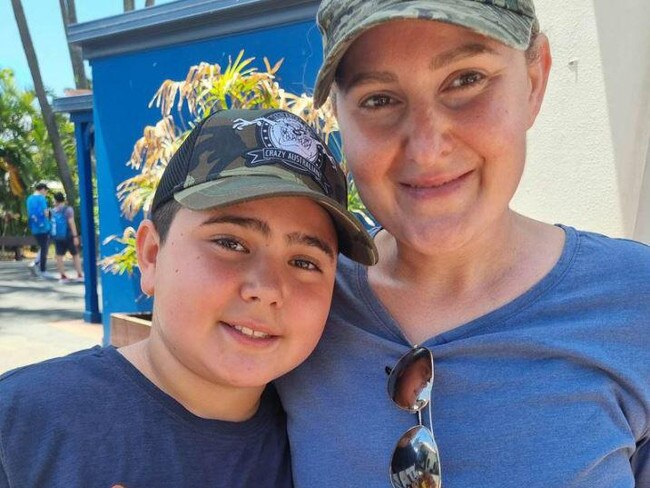
He said he recalled seeing that helicopter, XKQ, loading passengers on the ground before its takeoff and he believed it would pass by behind them as they came in to land.
Both helicopters had only been in service for a matter of weeks at the time of the tragedy after joining the Sea World Helicopters fleet in December 2022.
The investigation is not expected to be completed until next year with findings by the ATSB due to be released in late 2024.
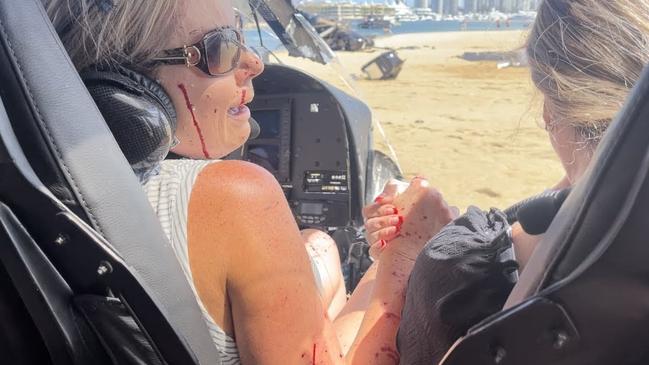
A pilot from a nearby operator also told investigators they recalled hearing Mr James announce his impending landing but did not hear any message from Mr Jenkinson indicating he was about to take off.
Another pilot in the air at the time could not recall hearing calls from either Sea World Helicopters pilots come over the radio.
The ground crew members who helped load passengers into the doomed chopper piloted by Mr Jenkinson later reported that they had not seen any other aircraft before giving the signal for the helicopter to take off.
Mr James later told investigators he did not see Mr Jenkinson’s chopper as he approached the landing pad, saying he was “focused on the landing site, and on managing rotor down wash to avoid a pleasure craft crossing their approach path”.
Investigators have also analysed mobile phone footage from passengers on-board the ill-fated flights, but the preliminary report stressed that “this does not mean that the helicopters were visible to either pilot from their position in the helicopter, or even the passengers filming and this aspect will be subject to detailed analysis by the ATSB investigation”.

Dramatic video taken from inside the cockpit shows one of the women trying to warn Mr James moments before the fatal impact.
The report said Sea World Helicopters, which remains grounded, had proposed new safety measures including high-vis paint on rotor blades, additional strobe lighting on the choppers, helipad controllers to provide traffic advice to pilots and live radar displayed on iPads in the cockpit.
In a statement, Sea World Helicopters Director John Orr-Campbell said the report was “another reminder of the tragic loss of life suffered that day”.
“All at Sea World Helicopters pay their deepest respect to Vanessa Tadros, Diane and Ron Hughes, our friend and late chief Sea World Helicopters pilot Ash Jenkinson, their families, and those who suffered physically and mentally in the accident,“ he said.
“Our special thoughts go to Winnie De Silva and her son Leon as well Nicholas Tadros, who is still in hospital recovering from his horrific injuries, and his father Simon who has been by his side all along.”
The statement said the business would “take the right amount of time and due care to review the findings”.
Originally published as Australian Transport Safety Bureau to release preliminary report into Sea World helicopter disaster

